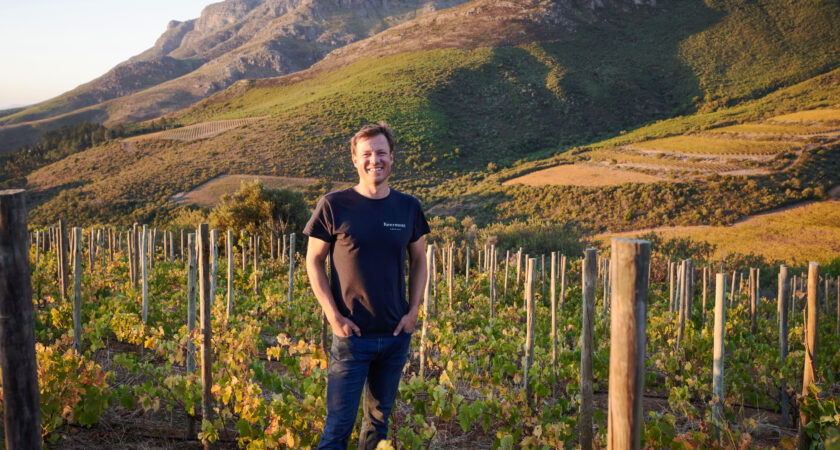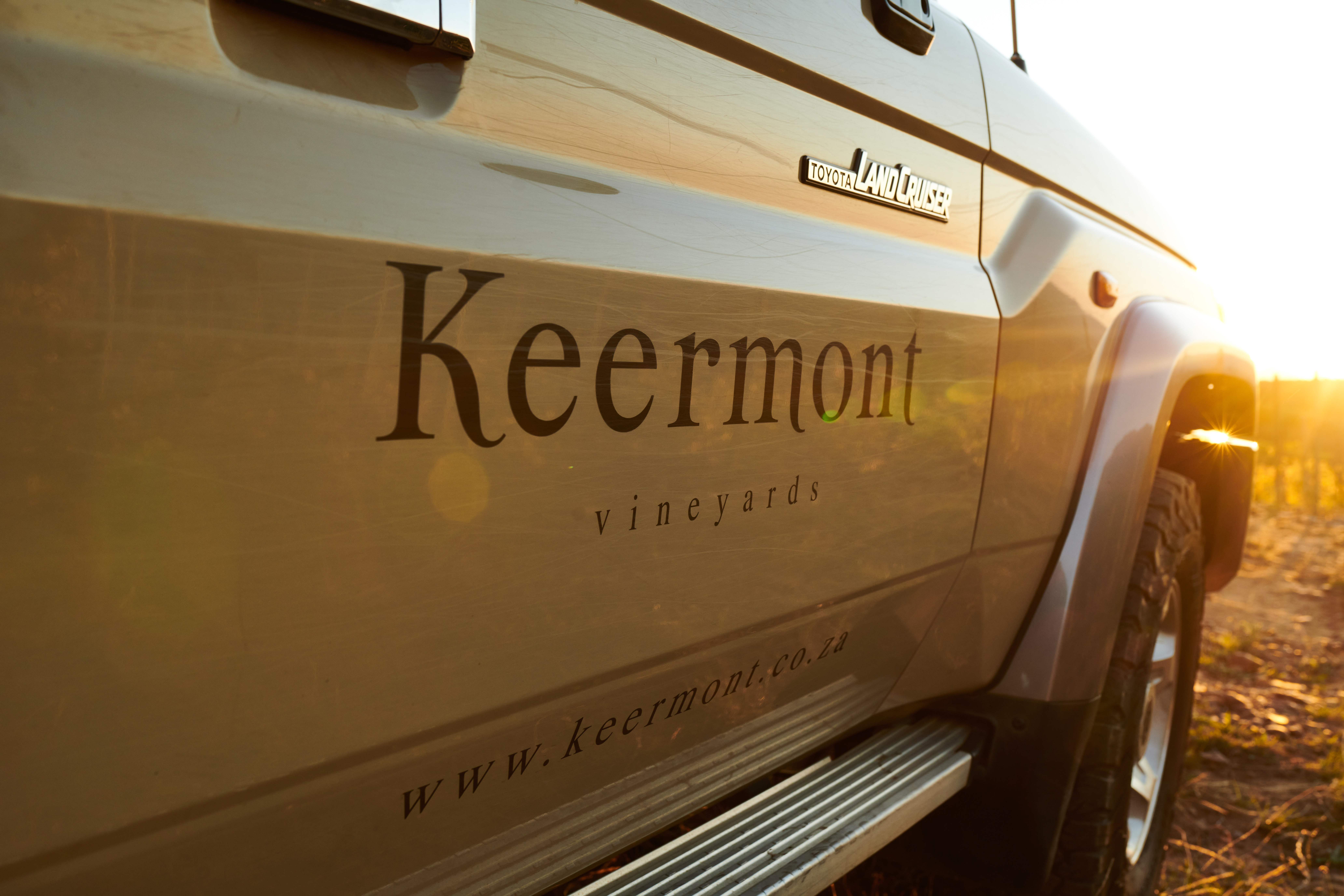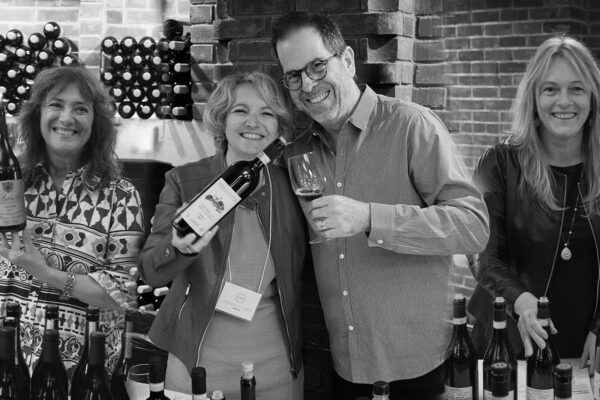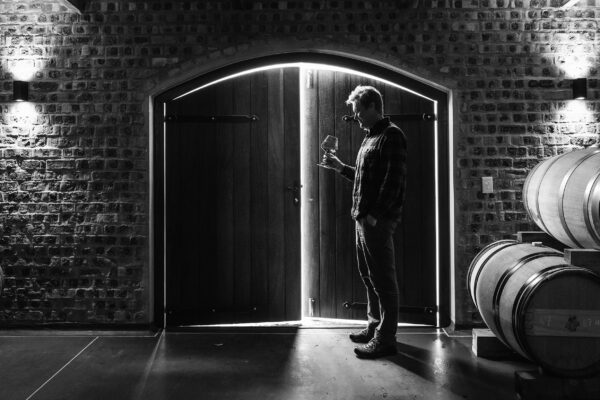Ahead of our Champagne and South Africa Tour next week, we sat down with Alex Starey of Stellenbosch’s Keermont Vineyards to talk about the estate’s evolution over the last two decades and his personal picks for what he’s most excited to show on the tour.
Remember to contact your Skurnik rep to RSVP in a city near you. The tour kicks off in New York City on October 15th.
Hi, Alex! Thanks for connecting with us all the way from South Africa. How’s life in the Southern Hemisphere?
Our spring is springing, and the vineyards are waking up. We’ve been working in the winery and in the vineyards, and it’s fairly full-on at the moment, but it’s where I like to be. Budbreak is starting already. True to our commitment, we’re doing a lot of work under the vines. We didn’t spread herbicide, so we’re doing a lot of work clearing all the weeds and stuff like that.
I’m not on camera, am I? I just came in from the vineyard. I’m wearing my dirty field clothes.
Nope, just audio. Before we get too deep into it, why don’t you tell us how you got started at Keermont?
I grew up down the road from Keermont—literally a kilometer from where we are—on a big farm. When I got back from Spain, Mark Wraith had recently bought Keermont. He had about ten hectares of vineyards, and he wanted to plant another 20 or so, but he needed a viticulturalist. I dropped off my CV and started in the beginning of 2005. It was my job to look after the vineyards, research the land, and really try to establish some high-quality vineyards.
Having grown up with an agricultural background, I’m curious how you have matured and developed your skills and your knowledge as a steward of the land, but also as a winemaker, particularly in the last 20 years.
That’s a huge question. The land is ever-evolving. There’s a lot more awareness these days in regards to sustainability. When I was growing up on a farm, there was very little awareness about chemicals. Using them was the norm. And coming into Keermont, that was the norm too. And we’ve farmed fairly conventionally all the way through, but always with this approach of learning more about organics and working a little bit more sustainably all the time.
I always say to people, you never have a complete handle on nature and on farming. It’s the most humbling type of job that you can do. Every time you think you’ve got it under control, something comes out of left field. It could be weather, it could be a disease, it could be insects, and it puts you back in your place. That’s just part of the season. Every season, we put in our best effort, and we try and get the grapes as good as we can get them.
With regards to Keermont, remember that we started with no wine. The grapes that were here before I started were sold to a winery up the road. I made the first two barrels in 2005. There was no wine before that, so there was no record of what the previous winemaker had done or anything like that. The last 20 years have been an evolution of creating a new style of wine. Every now and then, we do vertical tastings, and it’s lovely to see that there has been evolution, but there’s still a thread that runs through all the wines from the beginning.
But then on the business side, we’ve gone from a small farm that Mark bought and wanted to plant vineyards on all the way through to having a winery and a brand and a label and partners overseas and exports and websites and online sales and all these things that have come into play, which were never expected at the beginning. I didn’t learn any of that at university. I’m still learning as I go.
What do you think people tend to misunderstand about South African wine?
At the moment, there’s quite an increase in tourism to South Africa from the States, which is very important for us because people largely don’t have a lot of knowledge about our country and our wine industry.
First, it’s important for people to realize where we are. Africa is a big place. We have quite an established economy, and it’s a lot more sophisticated than people realize. Our wine industry is quite small. There are a few big wineries that take more of the national funding, so for smaller wineries like us, we don’t have the same support. A lot of our promotion is really up to us and our global partners/importers like Skurnik.
We are a very small wine producing area. Everything is within a few hours of each other, but it’s quite diverse. We have beautiful areas which are drier to more semi-arid. And then you go down to areas which are more temperate, all within a very small space. But within that there are quite a few producers really focusing on that terroir and really trying to drive the quality and push the limits in terms of what is achievable.
We have a lot of freedom here. I think it’s because without massive government influence, we have the ability to plant what we want, where we want, and we can make as much wine as we want. There are, of course, controls in place, but it’s not like Europe, where you’re told what you’re allowed to do within an area. There’s been a lot of exploration in the last 20 years.
You’ll see that a lot of South African wineries were established between 1999 and 2009, and there’s a political reason for that as well. Nelson Mandela was freed, and our first democratic election was only in 1994. Our industry was a lot more regulated under the old government. We had this big organization that basically controlled everyone’s production. There were all sorts of restrictions on what we could do, where we could travel, and things like that. Now it’s common for winemakers to leave and come back with fresh knowledge like I did, but nobody could do that in the ’90s.
We love to drink wines from all over Europe, the States, Australia, and New Zealand. There are so many exciting wines coming out, and we try to drink as many of them as we can. If you go to France and visit Burgundy and Beaujolais and the Northern Rhône, and you get to taste those wines on site and meet the winemakers, it makes a massive impression when you suddenly realize that we’re not just chasing the best in South Africa—we’re chasing the best in the world. You know what I mean? That’s the benchmark for us now.
Over the last five years, our South African portfolio has changed dramatically, and now Keermont is our first dedicated Stellenbosch producer. What do you think makes this place so special?
The region is sort of rewriting itself now. There are so many new producers coming out of South Africa who are buying grapes here and there and creating wines from parcels. A lot of them are Swartland-based or what have you, but we try to put a lot of emphasis on the fact that we grow, produce, and bottle here; we’re an estate. That’s really key to everything that we do.
There are now more and more exciting producers coming out of Stellenbosch, but for a long time it was sort of these big estates with big established winemakers trying to chase a Bordeaux- or Napa-type model where bigger extraction and oak were important. When I came in, I really didn’t care about what the rest of Stellenbosch was doing. I’m more focused on what is the best we can do for our grapes.
There are lots of wineries in our neighborhood, and most of them are known for making bigger styles of wine. Our approach was to just take our foot off the gas. I use that term a lot; just ease off a little, don’t work too hard, don’t try to force it too much. I try and make a statement with the wine, just being a little bit more gentle. We’re hidden up in this little valley, so I’m not fazed by what the others in Stellenbosch are doing.
It’s never been our priority to try to impress people with a boldness or that bigness in style. That’s not what I like to drink, and it’s not what I want to make.
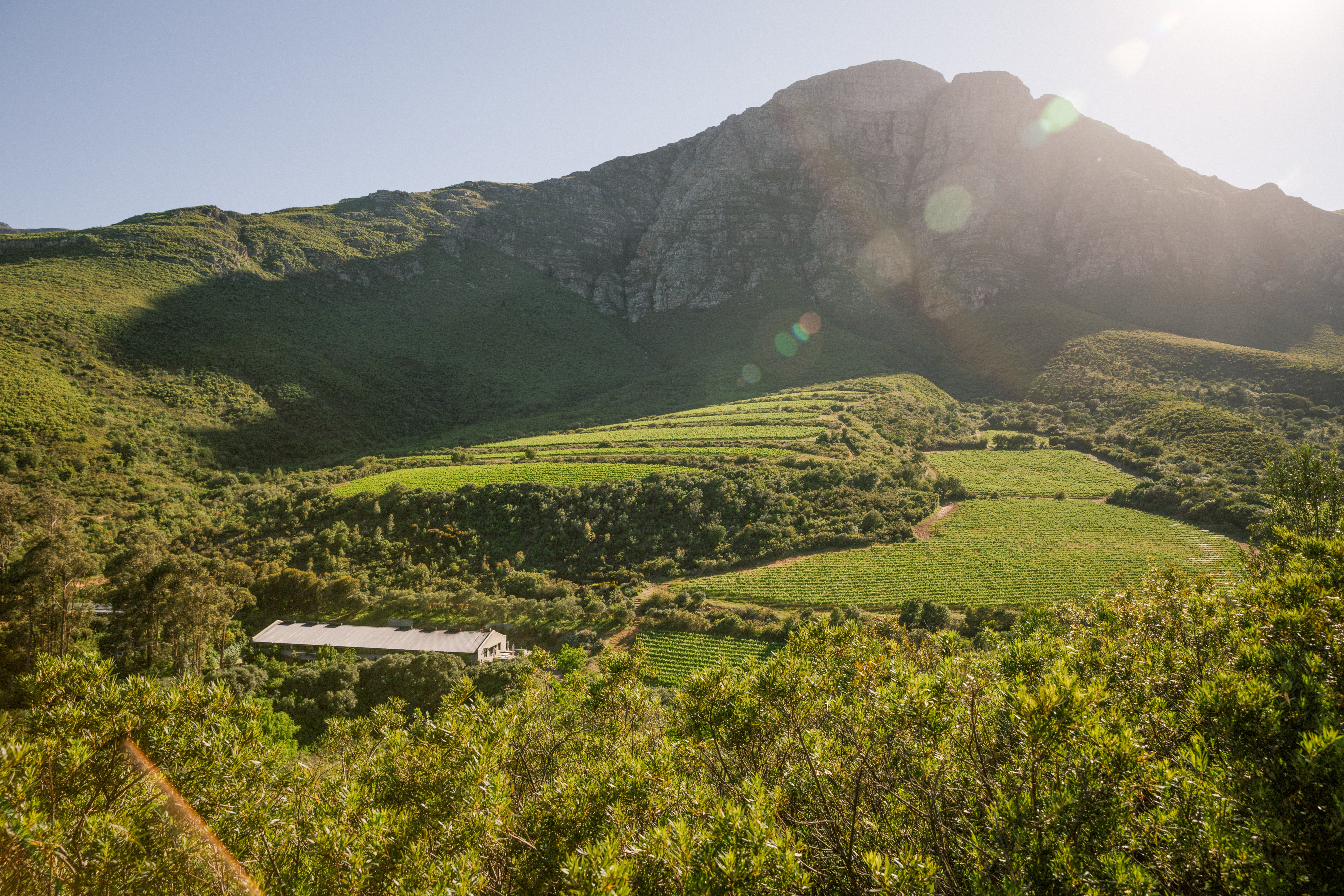
How would you define the perfect wine?
For breakfast, lunch, or dinner? That’s too broad. Let’s put it this way: I don’t like wines that are too big and too extracted and too full of oak and too “made.”
I love when somebody tells me they’ve made a barrel of wine in their garage. That fascinates me! I want to taste it because that person put a lot of love and care into that one barrel. I like wines where the winemaker is really paying attention to the vineyard that they’re working with and really trying to make something expressive out of it.
I like wines that are interesting even if they’re not perfect. Imperfection is great for me. I love wines that have character, wines that really tell a story about how the person wanted to make the wine or how the vineyard was run.
Last time we came to visit, one of your peers told us that you are one of the last farmer-winemakers in South Africa. According to him, there are few winemakers still on the tractor and in the vineyard quite like you are. You were trained as a viticulturalist. You planted most of these vines yourself. How does that shape your view of winemaking?
I have an amazing team. It’s my team in the vineyard who are really doing all the hard work. I have a lot of administrative responsibilities, and I don’t have to be out there, but every now and then I like to remind myself of what I love doing, what I was trained to do. Less email and more dirt. Working with my hands in the vineyards and at the winery is when I’m the happiest. It matters to me. If you’re literally there topping up barrels or pruning vines or something, then you’re physically making a difference.
In less than two weeks, Keermont wines are going to be traveling around the U.S. with Skurnik. Which bottle are you most excited to share with people?
Hmm. That’s like choosing your favorite child. You can’t do that. Well, you can, but you can’t tell them.
I think the Terrasse is a good introduction to who we are. That’s our white blend. When people taste it, they immediately want to taste everything else we’ve got. For the red, it’s our Stellenbosch Syrah. If I were to go into a gunfight, those would be my two guns.
You also make a dessert wine, which makes sense for a region with a rich viticultural history à la Napoleon and his Grand Constance. What makes your Fleurfontein so special?
In 2010, we had some Sauvignon Blanc left over, so we decided to do an experiment.
When the grapes were at their fullest, we went through the top ten rows of the vineyard with a pair of pliers, twisting the stems of each bunch until they broke, but keeping them hanging on the vine. With the translocation broken, the bunches wouldn’t continue to ripen—instead, they dry out on the vine. After about four weeks hanging on the vine like that, they will raisin. We then press the raisins and get syrup out of the Sauvignon Blanc. We put the syrup into barrels, and then that’ll ferment and mature for about 18 months or so.
It’s a naturally sweet wine. It’s not fortified in any way. We don’t stop the fermentation at all, and it ends up being a lovely, gentle, sweet wine, not a very big, thick, rich, sweet wine. It’s usually got ~230 grams of sugar, but it’s also got a lovely acidity and sort of saltiness about it.
That’s the Fleurfontein. It’s named after a spring. Our winery used to be a spring water bottling facility in the old days. The building was built to bottle spring water, and the name of the spring is Fleurfontein. In South Africa, every other place is called “something-fontein.” It’s Afrikaans for a spring where they found water.
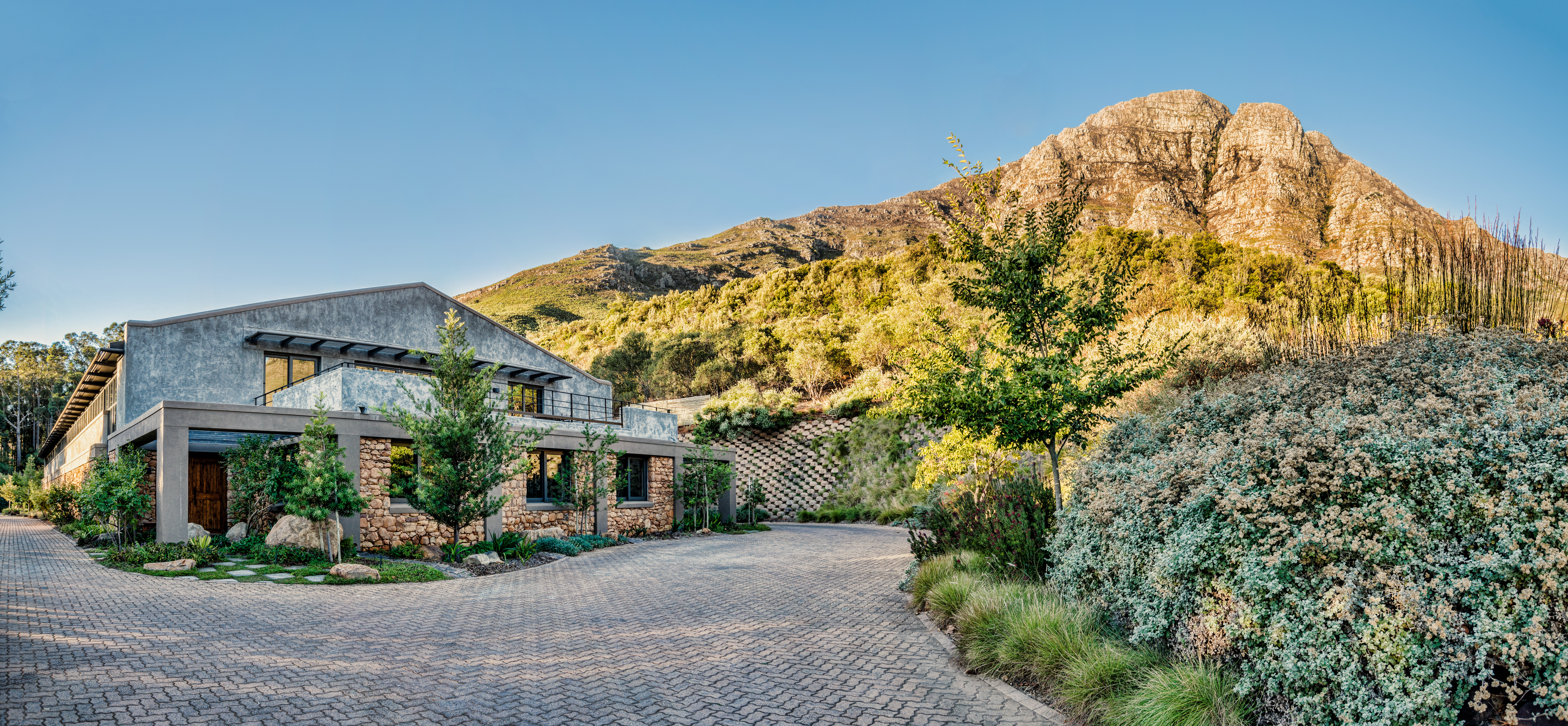
The 2022 vintage has a little bit of Roussanne in it. It also has a little bit more sugar—about 280-290 grams—and the alcohol is about 10%. It’s a lovely wine to show. We have some very loyal sweet wine fans.
You mentioned at the beginning that you’re a surfer. I’m curious if there’s a surfer attitude that is reflected in your work as a winemaker.
I think so. A lot of South African winemakers surf, and we hang out a lot. We actually have a competition every year, so that’s a lot of fun.
Surfing is a humbling sport. Every time you think you’re on top, it teaches you that you’re not, and it reminds you that it’s actually your environment that’s in control.
I think it teaches you a lot about nature, and it makes you realize that you can try to have the best day and try to make things work as best you can, but you’re not going to have the final say.
I think it’s made me a little bit more patient as a person, and winemaking requires a lot of patience. It’s a reminder that not everything works according to your schedule all the time. But we don’t work on Friday afternoons. Those are for surfing.
This interview has been edited for length and clarity.
Alex’s Picks
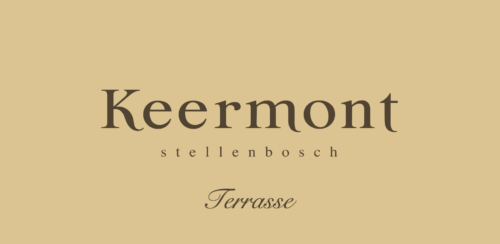
- 46% Chenin Blanc, 20% Chardonnay, 14% Sauvignon Blanc, 10% Roussanne, 8% Viognier & 2% Marsanne
- Sourced from terraced vineyards, which date back to 1971
- Hand harvested
- Each varietal is fermented separately with indigenous yeast in seasoned French oak barrels
- Aged for 12 months on the lees
- Bottling is carried out by hand with minimal fining and filtration
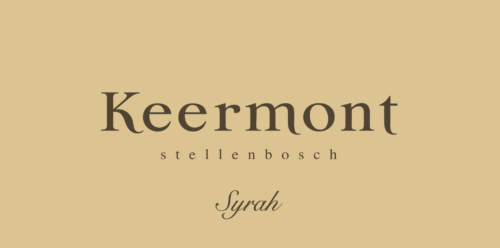
- 89% Syrah & 11% Mourvedre
- Sourced from 3 vineyards: Steepside, Topside, and Sweetwater
- Red clay-rich, and sandstone soils
- Hand harvested in small batches
- Each parcel is fermented separately with indigenous yeast in open top fermenters
- Aged 20 months in seasoned 500 and 225L French oak
- Bottling is carried out by hand with no filtration
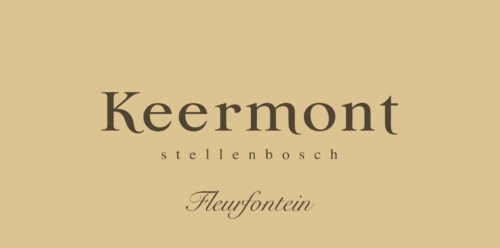
White Blend ‘Fleurfontein’ [Sweet]
- 85% Sauvignon Blanc & 15% Roussanne
- Keermont’s vineyard team use pliers to pinch the stem of the bunches when the grapes are at optimal ripeness
- Hand harvested
- Fermented with indigenous yeast in Hungarian and French oak barrels
- Aged for 18 months in these same barrels
- Only 2566 bottles produced




